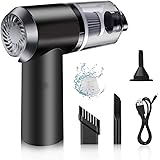Karachi’s climate is unique, with hot summers, mild winters, high humidity, and the occasional monsoon rains. These weather conditions can significantly impact your car’s performance and longevity, making regular inspections a necessity. A thorough car inspection tailored to Karachi’s environment will help prevent long-term damage and ensure that your vehicle runs smoothly throughout the year. Here’s a comprehensive car inspection checklist to keep your car in top shape in Karachi’s climate:
1. Tire Condition and Pressure
Karachi’s scorching summer heat can cause tires to overinflate, increasing the risk of blowouts. Regularly check tire pressure, ensuring it matches the manufacturer’s recommendations. Examine the tires for cracks, worn treads, and uneven wear, which may indicate misalignment or suspension issues. Consider rotating your tires every 5,000 kilometers to ensure even wear, especially if you frequently drive on Karachi’s bumpy roads.
2. Engine Cooling System
Karachi’s hot weather puts a lot of strain on your car’s engine cooling system. Inspect the coolant levels regularly, ensuring that the radiator is adequately filled with a proper mix of water and coolant. Leaks or faulty hoses should be repaired immediately to avoid engine overheating, particularly during Karachi’s sweltering summer months.
3. Battery Health
Heat can be a silent killer for car batteries. Karachi’s high temperatures can cause the battery fluid to evaporate, leading to a weakened battery. Check the battery terminals for corrosion and ensure they are clean and tightly connected. Testing your battery’s charge periodically can help avoid sudden breakdowns. Most batteries last between two and three years, but in Karachi’s extreme heat, replacement may be necessary sooner.
4. Air Conditioning System
Driving in Karachi without a functioning air conditioner is unbearable during summer. Ensure that the AC system is working properly by checking the refrigerant levels and cleaning or replacing the cabin air filter regularly. A clean filter ensures that the AC works efficiently and maintains good air quality inside the vehicle.
5. Brakes and Brake Fluid
Frequent traffic jams in Karachi lead to heavy brake usage. Brake pads can wear out faster in this stop-and-go driving condition. Inspect the brake pads, discs, and rotors for wear and tear. Additionally, ensure that the brake fluid is topped up and that there are no leaks in the brake lines. Timely brake maintenance is essential for your safety on Karachi’s busy roads.
6. Windshield Wipers and Fluid
Monsoon rains in Karachi can lead to poor visibility if your windshield wipers are not in good condition. Check the wiper blades for cracks or stiffness, and replace them if necessary. Make sure the windshield washer fluid is topped up and functional. This will help you keep your windshield clean during both the rainy and dusty seasons.
7. Suspension and Alignment
Karachi’s uneven roads and potholes can take a toll on your car’s suspension system. Listen for any unusual sounds or vibrations when driving, as these could be signs of worn-out shocks or struts. Misalignment can lead to uneven tire wear and poor handling, so have your car’s alignment checked regularly to ensure smooth and safe driving.
8. Exhaust System
The humid conditions in Karachi, especially during the monsoon season, can cause rust to develop in your car’s exhaust system. Regularly inspect the exhaust for any rust, holes, or loose connections. An efficient exhaust system ensures that your car runs smoothly and reduces harmful emissions, making it both eco-friendly and fuel-efficient.
9. Oil and Fluid Levels
High temperatures can cause your engine oil to degrade more quickly, making it essential to change the oil and filter at regular intervals. Additionally, check other fluids such as transmission fluid, brake fluid, power steering fluid, and windshield washer fluid. Keeping these fluids at optimal levels ensures that your car’s systems run smoothly, especially in Karachi’s demanding climate.
10. Body and Paint Protection
Karachi’s harsh sun can cause your car’s paint to fade and oxidize. Wash and wax your car regularly to protect the paint from the sun’s UV rays. During the monsoon season, moisture can lead to rust, particularly in older cars. Inspect the car’s body for any signs of rust and treat it immediately to prevent further damage. A protective coating or ceramic treatment can also help preserve your car’s exterior.
11. Lights and Electrical System
The high humidity and heat in Karachi can cause electrical issues in cars. Regularly check all your lights—headlights, brake lights, fog lights, and turn signals—to ensure they are functioning properly. Inspect the wiring and fuses for any signs of wear or corrosion, especially after the rainy season.
12. Air Filters
Karachi’s dusty environment, especially near construction sites or in industrial areas, can clog your air filters. A dirty air filter can reduce fuel efficiency and affect engine performance. Check and clean or replace the air filters regularly to ensure your car breathes easily and runs efficiently.
13. Fuel System
Humidity and high temperatures can cause moisture buildup in your fuel system, leading to corrosion and poor engine performance. Use fuel additives to prevent moisture accumulation, and periodically inspect the fuel filter and fuel injectors for clogging. This will help keep your engine running smoothly, especially during the monsoon season.
Conclusion
Regular inspections tailored to Karachi’s climate are crucial for the long-term health of your car. By following this checklist, you can prevent many of the common issues caused by extreme weather conditions and ensure that your vehicle remains reliable and safe to drive. Whether it’s scorching heat or unexpected rain, a well-maintained car will keep you on the road without hassles.
Misamo Enterprise PVC Wall Hooks, Pack of 15, Transparent
₹199.00 (as of 19 September, 2024 18:22 GMT +05:30 - More infoProduct prices and availability are accurate as of the date/time indicated and are subject to change. Any price and availability information displayed on [relevant Amazon Site(s), as applicable] at the time of purchase will apply to the purchase of this product.)Odonil Room Air Freshener Spray - 440ml Combo (Pack of 2, 220ml each) | Jasmine Fresh & Ocean Breeze | Nature Inspired Fragrance for Home & Office | Long Lasting Fragrance
₹199.00 (as of 19 September, 2024 18:22 GMT +05:30 - More infoProduct prices and availability are accurate as of the date/time indicated and are subject to change. Any price and availability information displayed on [relevant Amazon Site(s), as applicable] at the time of purchase will apply to the purchase of this product.)Claiez Fridge Storage Boxes Freezer Storage Containers, Container for Kitchen Storage Set, Storage in Kitchen, Vegetable Storage, Draining Crisper Refrigerator Food Box (1200 ML-8 pc)/
₹449.00 (as of 19 September, 2024 18:09 GMT +05:30 - More infoProduct prices and availability are accurate as of the date/time indicated and are subject to change. Any price and availability information displayed on [relevant Amazon Site(s), as applicable] at the time of purchase will apply to the purchase of this product.)SHAYONAM 3IN1 Portable Car Vacuum Cleaner with Blower | USB Rechargeable Wireless Handheld Car Vacuum Cleaner Traveling, Camping Reusable,Portable,Rechargeable (Vacuum with Blower)(Multy)
₹699.00 (as of 19 September, 2024 18:09 GMT +05:30 - More infoProduct prices and availability are accurate as of the date/time indicated and are subject to change. Any price and availability information displayed on [relevant Amazon Site(s), as applicable] at the time of purchase will apply to the purchase of this product.)Air Wick 250 ml - Vanilla & Muskmelon (Summer Delights), Refill + Automatic Spray| Freshmatic Air Freshener Kit | 2600 Sprays Guaranteed | Automatic Room Freshener, Bathroom Freshener and Room Spray
₹413.00 (as of 19 September, 2024 18:22 GMT +05:30 - More infoProduct prices and availability are accurate as of the date/time indicated and are subject to change. Any price and availability information displayed on [relevant Amazon Site(s), as applicable] at the time of purchase will apply to the purchase of this product.)Discover more from The General Post
Subscribe to get the latest posts sent to your email.





